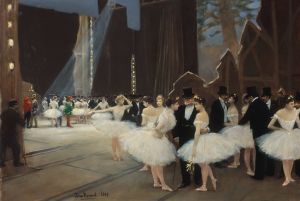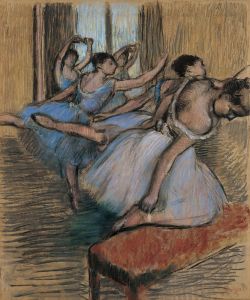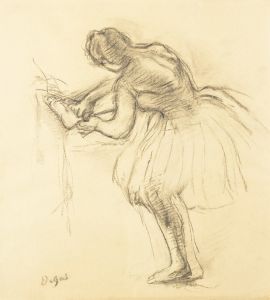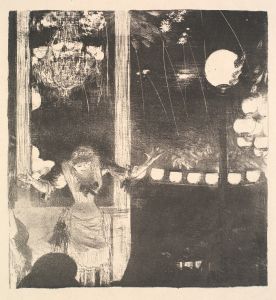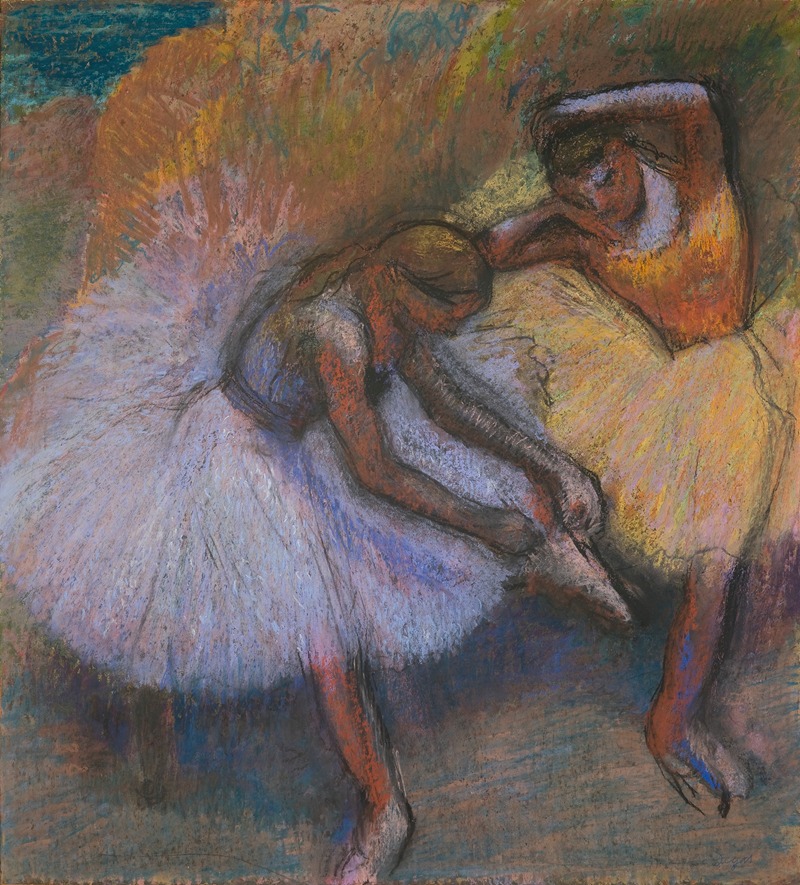
Two Dancers
A hand-painted replica of Edgar Degas’s masterpiece Two Dancers, meticulously crafted by professional artists to capture the true essence of the original. Each piece is created with museum-quality canvas and rare mineral pigments, carefully painted by experienced artists with delicate brushstrokes and rich, layered colors to perfectly recreate the texture of the original artwork. Unlike machine-printed reproductions, this hand-painted version brings the painting to life, infused with the artist’s emotions and skill in every stroke. Whether for personal collection or home decoration, it instantly elevates the artistic atmosphere of any space.
Edgar Degas, a prominent French artist known for his contributions to Impressionism, created "Two Dancers" around 1898. This artwork is a pastel on paper, a medium Degas frequently employed in his later years. The piece is part of a series of works by Degas that focus on ballet dancers, a subject he explored extensively throughout his career.
"Two Dancers" exemplifies Degas's fascination with movement and the human form. The composition captures two ballet dancers in a moment of rest or preparation, a common theme in Degas's work. Unlike many of his contemporaries, Degas preferred to depict dancers off-stage, capturing the behind-the-scenes reality of their lives. This approach allowed him to explore the nuances of posture and gesture, emphasizing the physical demands of ballet.
The use of pastel in "Two Dancers" is significant, as Degas was a master of this medium. Pastel allowed him to achieve a remarkable vibrancy and texture, which is evident in the delicate rendering of the dancers' costumes and the subtle play of light and shadow. The colors in the artwork are both vivid and soft, creating a sense of immediacy and intimacy. Degas's technique involved layering colors and using fixatives to build depth, a method that contributed to the dynamic quality of his pastels.
Degas's interest in dancers was partly inspired by his desire to capture modern life in Paris. Ballet was a popular entertainment in the city, and the dancers represented a blend of grace and discipline that fascinated Degas. His works often reveal the strenuous effort behind the art of ballet, contrasting the elegance seen on stage with the rigorous practice and dedication required behind the scenes.
"Two Dancers" reflects Degas's innovative approach to composition. He often employed unusual angles and cropping, influenced by the burgeoning field of photography. This technique is evident in the way the dancers are positioned within the frame, creating a sense of spontaneity and movement. Degas's compositions frequently guide the viewer's eye across the canvas, encouraging an exploration of the scene.
Throughout his career, Degas was associated with the Impressionist movement, although he preferred to be called a realist. His work, including "Two Dancers," often focused on capturing fleeting moments and the effects of light, aligning with Impressionist ideals. However, Degas's emphasis on line and form set him apart from his peers, showcasing his unique artistic vision.
Today, "Two Dancers" is housed in the Museum of Modern Art in New York City, where it continues to be admired for its technical brilliance and insight into the world of ballet. The piece is a testament to Degas's enduring legacy as an artist who captured the beauty and complexity of human movement with unparalleled skill and sensitivity.






